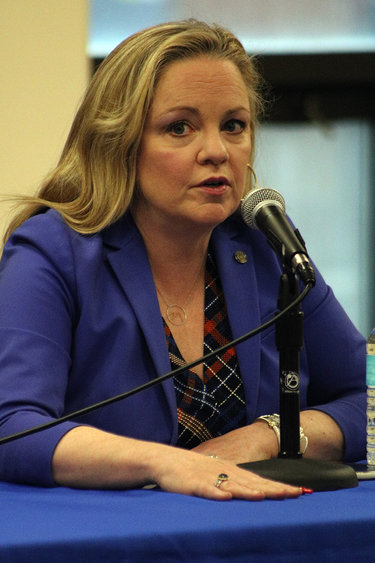Governor joins with nearby states, setting up council to restore economy
ALBANY COUNTY — On Monday, as Albany County announced two more deaths from coronavirus disease 2019 — bringing the county’s death toll to 14 — Governor Andrew Cuomo announced that he was joining with neighboring states to create a council to restore the economy and get people back to work.
New York, New Jersey, Connecticut, Pennsylvania, Delaware, and Rhode Island are forming a coordinating group — comprised of one health expert, one economic-development expert and the chiefs of staff from each state — to develop a regional framework to gradually lift the states’ stay-at-home orders while minimizing the risk of increased spread of the virus.
Strategies are to include testing, contact tracing, treatment, and social distancing.
The curve continues to flatten, Cuomo said at his press briefing. “It appears that we have a plateau ... It flattens out for a period of time. Nobody knows how long because no one has been here before.”
He announced that 671 New Yorkers died on Easter Sunday, bringing the state’s death toll from COVID-19 to 10,056.
At the same time, Cuomo said that the worst is over for New Yorkers. Looking ahead, he said, “Testing is going to be key. That’s a new frontier for us, also.” He had spoken earlier about immunity testing, to identify people who had recovered from the virus and would therefore be immune and able to return to work.
Cuomo said on Monday that the experts would look at how reopening the economy has been handled in other countries.
He also said, “It’s not going to be, we flick a switch and everybody comes out of their house and gets in their car and waves and hugs each other and the economy all starts up. I would love to say that’s going to happen. It’s not going to happen that way. It can’t happen that way.
Meanwhile, at Albany County’s briefing, Daniel McCoy, the county executive, said of COVID-19, “We’ve slowed it down. It has not gone away.”
The two patients who died on Sunday were a man in his seventies and a woman also in her seventies. As with all of the county’s deaths, these patients, too, had underlying health conditions.
There are now 638 people in Albany County under mandatory quarantine and 74 under precautionary quarantine. Thirty COVID-19 patients are hospitalized with 16 of them in intensive-care units.
“This is certainly a tragedy,” said Elizabeth Whalen, the county’s health commissioner, of the death toll.
She also provided some “good news” numbers. Out of the 475 confirmed COVID-19 cases in Albany County, 216 of those patients have thus far been released from follow-up by the county, Whalen said.
“The vast majority of people that get coronavirus, along the lines of 80 percent, have either a very mild illness or something resembling the seasonal flu,” said Whalen, adding that flu is not “mild” but something most people recover from.
“The other 20 percent get a more severe illness … The bad news is we really don’t know who that 20 percent will be,” said Whalen, noting that some people who are old or who have pre-existing conditions have had bad cases of COVID-19.
But, she went on, “We have seen elderly people recover. Unfortunately, we have also seen younger people have a more severe case … We don’t know how to predict that,” she said, urging that the best course is to stay home.
Whalen also reported that 1,235 people whom the county had followed under mandatory quarantine have been released from quarantine.
“Unfortunately,” Whalen went on, “the vast majority of the population of Albany County is still not immune to COVID-19 and is therefore still susceptible to COVID-19.” The county has about 320,000 residents.
“We still don’t have assurances that it is safe for us to resume any kind of life as we knew it before this began,” said Whalen, “so all of the precautions that we have been talking about still need to be put in place.” Those precautions include staying at home, keeping a least six from people when out, covering coughs, and washing hands.
Whalen said that many people are wondering, “Could I have been one of the people that was asymptomatic? And am I now immune to COVID-19?”
More information is needed on immunity testing, she said.
“A myriad of companies are looking to release antibody testing and I would urge caution at this point,” said Whalen. “All of these tests need to be property vetted. We do not want to give people a false sense of security so we need, really, to rely on scientific guidance for what the best methods of testing are.”
She went on, “The state health department is working on issuing guidance on this.” Whalen said the county would be closely watching that in the weeks and months ahead.
“In the meantime, it’s very important that we have community testing,” she said. The state set up a drive-through facility at the University at Albany to test for COVID-19 on April 6. Because the facility is housed in tents, it was closed again on Monday, as it had been Friday, due to high winds.
“Community testing gives us the best idea of what our community is currently facing,” said Whalen. “And it also enables us to use the best methods of control by rapid identification of cases and isolation of cases and quarantine of contacted individuals.”
Whalen said she hopes that later this week additional testing sites will be set up for Albany County residents who can’t get to the UAlbany campus.



